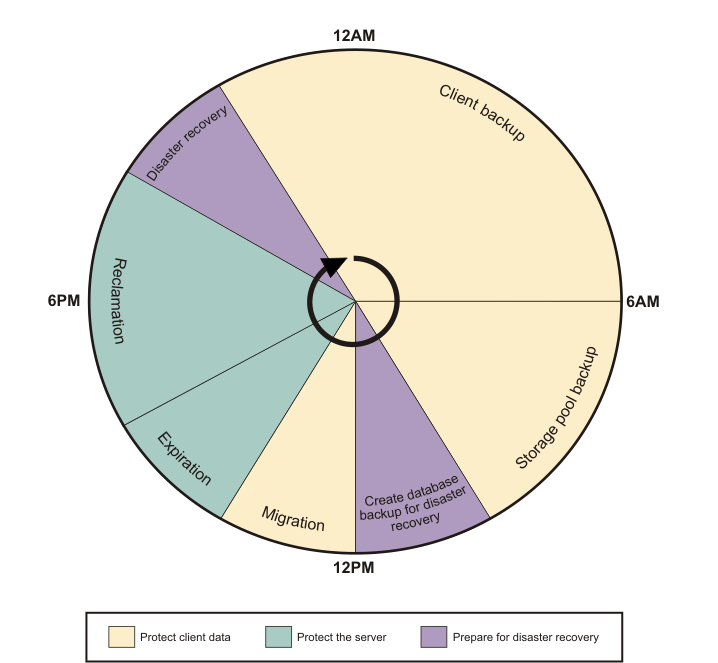Typically, backups for all clients must be completed every day. Certain server maintenance processes must also run every day. Ensuring that resources for these critical operations are available when needed requires planning and tuning.
About this task
- Protecting client data by backing up storage pools
- Positioning data appropriately in the storage hierarchy
- Keeping the database, storage hierarchy, and server operations working efficiently
- Preparing for the next schedule cycle
Carefully schedule client and server workloads to achieve
the best performance for your environment. If the client and server
operations overlap or are not given enough time and resources to be
processed, the environment might be impacted in the following ways:
- Less processing power and memory available to support an operation
- Performance degradation
- Insufficient space for data storage
- Data placement might not be optimal
- Operations might fail
For optimum performance, split the tasks of backing up and archiving client data, and performing server data maintenance into separate time windows. Most operations on the server have an optimal order, and in some cases must be completed without overlap to avoid resource contention problems.
The following image illustrates
how Tivoli® Storage
Manager tasks
fit into the daily schedule.
Figure 1. Daily
schedule of Tivoli Storage
Manager operations

Tivoli Storage Manager can schedule daily activities to follow best practices. Sample commands are provided to implement each step. All listed commands are server commands unless otherwise noted.